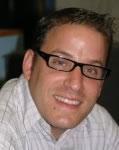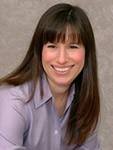Reform Movement passes a resolution on Stem Cell Research in 2003. I share with you what was presented and approved in 2003. This is the most precise view of the Union For Reform Judaism. This has supported actions taken and comments made by the Religious Action Center for Reform Judaism in statements made on issues that are voted on in our government.
67th General Assembly
November 2003
Minneapolis, Minnesota
RESOLUTION ON STEM CELL RESEARCH
BACKGROUND
Jewish tradition teaches us that preserving life and promoting health are among the most precious of values. These values have informed our affirmative commitment to medical science throughout the ages. Judaism has always encouraged scientific and medical advances. As Nachmanides taught, the practice of healing is not merely a profession, it is a mitzvah, a righteous obligation. A recent CCAR responsum applies this principle to human stem cell research: "If we define the administration of lifesaving medical therapy as pikuach nefesh, we should not forget that physicians could not save lives were it not for the extensive scientific research upon which our contemporary practice of medicine is based. Since research into human stem cells partakes of the mitzvah, of healing, surely our society ought to support it" (CCAR Responsum 5761.7, Human Stem Cell Research, Rabbi Mark Washofsky).
Continuing developments in biological science have opened the door to life-enhancing and life-saving technologies. The sequencing and mapping of the human genome, in particular, have profound implications for medical technologies. At the forefront of these possibilities is the opportunity for treating or preventing diseases through gene manipulation, often called "gene therapy." Somatic gene therapy attempts to correct a genetic defect in the cells or tissues of an individual in order to prevent or treat disease and may help heal or prevent debilitating afflictions. Somatic gene therapy should not be confused with germline therapy, which is more controversial and involves changes to an individual's genetic makeup that can then be passed on to future generations, with unknown implications and potential complications.
Stem cell research involves cells that can potentially develop into any kind of cell, tissue, or organ in the body ("totipotent stem cells") and that may one day soon be able to replace damaged or sick cells in a patient with an injury or degenerative disease. For example, scientific research into stem cell regeneration holds the promise of finding new and effective treatments for Alzheimer's, Parkinson's, spinal cord injuries, and certain types of cancers. The moral imperative to pursue stem cell research is clear; it is an embodiment of the mitzvah, of healing. Our tradition requires that we use all available knowledge to heal the ill, and "when one delays in doing so, it is as if he has shed blood" (Shulchan Aruch, Yorei De`ah 336:1).
Totipotent stem cells are commonly obtained by using somatic cell nuclear transfer (SCNT) technology. This technique, commonly referred to as cloning, involves the removal of the nucleus of an unfertilized, mature egg and its replacement with a genetically complete nucleus obtained from another adult or fetal organism. Since almost all of the hereditary genetic material of a cell is contained within its nucleus, the entity into which this egg develops is genetically identical to the organism that was the source of the transferred nucleus.
While some argue that stem cells harvested from adults and the existing stem cell lines are sufficient for research, most in the scientific community maintain that the use of SCNT technology to develop new stem cell lines ("embryonic stem cells") is critical to further development of the medical research. It is important to note that there are ample sources of embryos for research that are currently being discarded and that research using embryonic tissue would not require the creation of new embryos for the purpose of such research.
"Therapeutic cloning" uses SCNT technology to create cells that develop only until the pre-embryo stage, at which point the stem cells are removed. These stem cells are then used to research possible cures for serious medical diseases and conditions. In contrast, "reproductive cloning" attempts to use this technology to produce a living, breathing human being. This resolution deals with therapeutic cloning; it does not address the issue of reproductive cloning of humans.
SCNT technology can play a vital role in exploring the causes and treatment of genetic diseases; it may help to develop therapies for the afflictions mentioned above, and it may also help develop stem cells to regenerate human tissues, nerve cells, and skin cells.
Some opponents of SCNT technology argue that every fertilized egg could be allowed to develop into a fetus. Halting the process to harvest the stem cells seems to them like killing a fetus-a perspective the URJ has never accepted. Numerous URJ, CCAR and WRJ resolutions and CCAR Responsa about when life begins clarify our views in this area. (See, for example, the 1985 and 2000 CCAR Responsa related to abortion, found on-line at www.ccarnet.org/resp.)
To other opponents, the possibility for abuse of SCNT technology seems overwhelming, and for this reason, they would prohibit the entire field of research and therapy. While we recognize the potential abuses that could arise from SCNT technology, these concerns can be met by taking measured, cautious steps and are far outweighed by the potential benefit of medical procedures that promise to cure so many. JEWISH TRADITION TEACHES THE VALUE OF SAVING EVEN A SINGLE LIFE, AND THE CALLOUSNESS OF FAILING TO SAVE A LIFE WHEN POSSIBLE. AS WE LEARN IN THE TALMUD, "WHOEVER CAUSES THE LOSS OF A SINGLE SOUL IS AS THOUGH HE CAUSED THE LOSS OF A WORLD ENTIRE; AND WHOEVER SAVES A SINGLE LIFE IS AS THOUGH HE SAVED A UNIVERSE" (TALMUD, SANHEDRIN 37a).
Clearly, there is a need for moral and ethical deliberation, yet we know that millions of God's children are plagued by diseases and injuries that we have the potential to heal. The ethical choice must be to advance our research into lifesaving technologies, not abandon it.
THEREFORE, the Union for Reform Judaism resolves to:
-
Support:
-
Research using both adult and embryonic stem cells, in addition to the existing lines currently approved for funding by the United States and Canadian governments;
-
Research using somatic gene therapy;
-
Research using somatic cell nuclear transfer (SCNT) technology for therapeutic cloning; and
-
Government funding for all such research;
-
Oppose efforts to restrict or penalize scientists, clinicians, or patients for participating in stem cell research and SCNT technology for therapeutic purposes;
-
Support appropriate legislative and executive actions consistent with the above objectives;
-
Support efforts by the scientific community to develop regulations and monitor those using SCNT technology; and
-
Call upon congregations, in conjunction with the URJ Department of Jewish Family Concerns and the Commission on Social Action, to create educational programs that explore the issues raised by genetic technology within a framework of Jewish values.









